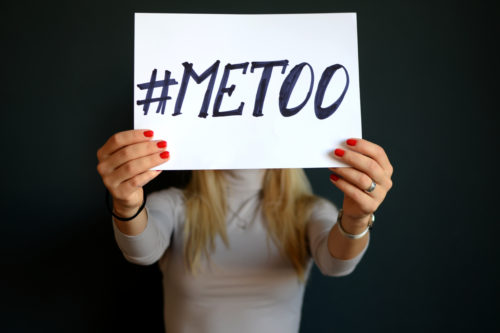States, Medical Regulators and Institutions Must Act to End Sexual Abuse of Patients by Physicians in the U.S.
Health Letter, August 2021
By Azza AbuDagga, M.H.A., Ph.D.

Article originally published online in Ms. Magazine, June 8, 2021. https://msmagazine.com/2021/06/08/end-doctor-physician-sexual-abuse-george-tyndall-larry-nassar/.
In March, news broke about the University of Southern California’s historic $1.1 billion payments to settle lawsuits for decades worth of alleged patient sexual abuse b by its former gynecologist George Tyndall. The most recent settlement involved 710 women, although the university acknowledged and factored into the settlement that the physician could have abused nearly 17,000 patients.
Tyndall’s case is just one of several high-profile examples of alleged physician perpetrators who made headlines, including former gymnastic physician Larry Nassar, who sexually assaulted at least 332 minor girls and women, and Ohio State University physician Richard Strauss, who abused at least 177 women.
Insidious abuse
Patients place a lot of trust in their physicians. They reveal personal information to them and subject their bodies to intimate physical examination, which is usually necessary to receive proper medical care. Unfortunately, this trust also can make patients vulnerable to sexual exploitation by unethical physicians who fail to heed the strict ethical prohibition against this injustice.
There is a tremendous power imbalance in the physician-patient relationship, which explains why patients often literally “freeze” like a deer in the headlights during sexually abusive medical encounters. For example, the majority of female patients who had undergone sexually abusive pelvic examinations by a male gynecologist did not stop the procedures because they believed they had a serious internal medical problem that necessitated them. These patients trusted that the physicians were ethical or felt powerless to interrupt them.
Such physician abuse is not a new issue. For example, in a 1996 anonymous random nationally representative physician survey 3.4% of the respondents admitted having had sexual contact with one or more patients.
Yet, physicians are rarely held to account for this unethical behavior. A 2020 report by Public Citizen’s Health Research Group showed that over 15 years, only 1,354 physicians (0.2% of U.S. physicians) were reported to the National Practitioner Data Bank (NPDB) — a national system for flagging potentially dangerous physicians — due to “sexual misconduct.”
Why are many abusive physicians not held accountable?
The Tyndall case and the independent investigative reports of Nassar and Strauss point to oversight failure as a root cause for why abusive physicians can slip through the cracks.
Multiple — and often early — clear red flags, including calls for help by victims and even complaints by health care professionals, were ignored or dismissed by the individuals and institutions charged with protecting the public.
Our report echoes these findings and illustrates that both state medical boards and medical peer-review committees in health care organizations are often too lenient with sexually abusive physicians.
Rather than considering sexual abuse as a crime that should be punished immediately, too often these physician regulators simply require sexually abusive physicians undergo boundary or ethics classes. They similarly channel sexually abusive physicians to rehabilitation programs.
Through subsequent private agreements or other negotiated arrangements, sexually abusive physicians are generally assigned chaperones or have their licenses or clinical privileges limited or restricted until they are “educated” or “rehabilitated.” In fact, our report showed that 38% of the 1,354 physicians who had sexual-misconduct NPDB reports continued to practice in the states where they had been disciplined or had reports of malpractice payments involving such offenses.
Physician regulators also tend to conceal sexual misconduct by using nonspecific reasons for disciplinary action, including “unprofessional conduct” when reporting to the NPDB.
Lastly, physician regulators often permit sexually abusive physicians to resign, surrender their licenses or clinical privileges, or retire to avoid revocation actions — allowing them to move to other health care organizations or obtain licenses in other states.
All these factors created a systematic tolerance of sexually abusive physicians.
Zero-tolerance stance and comprehensive actions needed
In Aug. 2020, we sent letters to the Secretary of the U.S. Department of Health and Human Services and the Administrator of the Health Resources and Services Administration, as well as leaders of the Federation of State Medical Boards and each U.S. state medical or osteopathic board. Our letters called for the implementation of a zero-tolerance policy against physician sexual abuse and offered detailed recommendations towards that.
Although the COVID-19 pandemic presents immediate challenges for states and medical regulators and institutions alike, they must not defer the overdue changes to combat the national inertia against physician sexual abuse of patients.
Without a serious reckoning and system improvements, even more patients will experience lasting damage by the very individuals they trusted would not harm them.